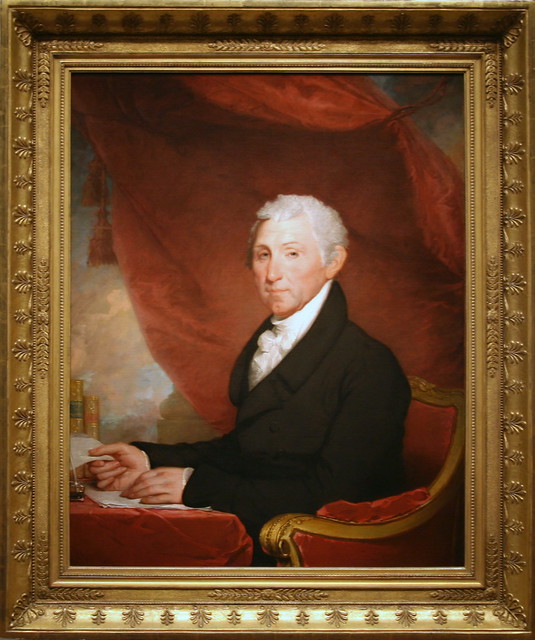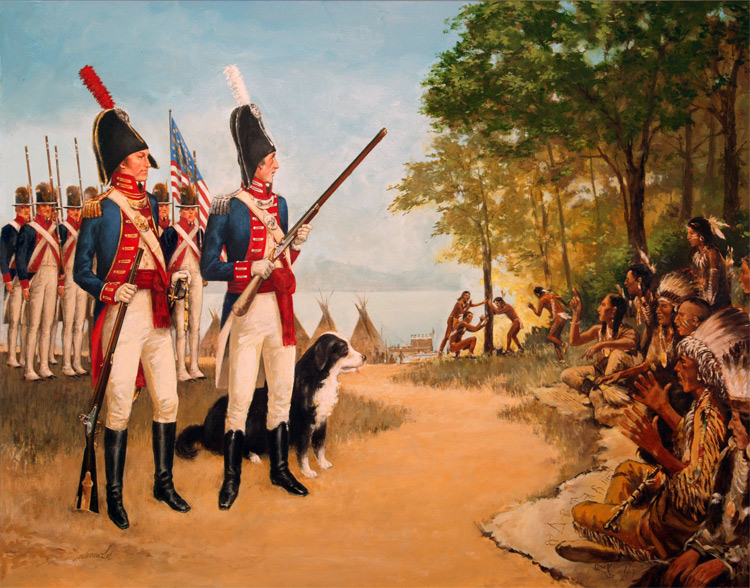James Monroe
Quick biographical facts:
5th President of the United States
Number of Terms Elected: 2 Terms
(March 4, 1817 to March 3, 1825)
Nicknames:"The Last Cocked Hat";"Era-of-Good-Feeling President"
Born: April 28, 1758, in Westmoreland County, Virginia
Died: July 4, 1831, in New York, New York
Father: Spence Monroe
Mother: Elizabeth Jones Monroe
First Lady: Elizabeth Kortright
Children: Eliza Kortright Monroe (1786-1835); James Spence Monroe (1799-1800); Maria Hester Monroe (1803-50)
Presidential Salary: $25,000/year
James Monroe was the last of the revolutionary patriots to become president. Monroe was the logical presidential nominee at the end of Madison’s second term, and he won the election easily. On March 4th, 1817, James Monroe took his oath of office. Monroe’s presidency was known as The Era of Good Feelings, because the nation was politically tranquil and at peace, and it was feeling of national unity. But not everything was ideal, there was depression in 1819, and the next year, the Missouri Compromise ignited angry debates about the extension of slavery in the new states and territories. During the presidency of James Monroe, especially in his first terms, several things happened: Congress fixed 13 as the number of stripes on the flag to honor the original colonies; five states were added to the union; the boundary between Canada and the United States was fixed at the 49th parallel.; Spain handed over Florida to the United States in exchange for the cancellation of $5 million in Spanish debt; The Missouri Compromise, admitted Missouri as a slave state and main as a free state and forbade slavery in any states carved from the Louisiana Territory north of 36 degrees 30 minutes latitude, that way the number of slaves states and free states would remain equal at 12 each. Monroe seriously considered vetoing the bill. He didn’t believe that the federal government had the power to tell a state whether or not it could permit slavery. In December 1823, President Monroe announced his new foreign policy. He declared that the United States would not look kindly on European nations that tried to interfere in North and South American affairs. He also warned against any known attempts to establish colonies in the Americas by European powers. This bold policy became known as the Monroe Doctrine. With the exception of the Monroe Doctrine, Monroe’s second term as president was relatively uneventful. James Monroe was 67 years old when he turned over his presidency to John Quincy Adams. He retired to Oak Hill, Virginia. He was plagued by financial worries and he was forced to sell his estate Ash Lawn to meet his debts. Monroe died of heart failure on Jul 4th, 1831, the fifty-fifth anniversary of the signing of the Declaration of Independence. He was the third president to die on Independence Day.
- 1818
- Congress fixed the number of stripes on the U.S. flag at 13 to honor the original colonies, April 4.
Anglo-American Conventionset the 49th parallel as the border with Canada.
- Congress fixed the number of stripes on the U.S. flag at 13 to honor the original colonies, April 4.
- 1819
- Florida ceded by Spain to the United States on February 22. In exchange the U.S. cancelled $5 million in Spanish debts.
- 1820
- The Missouri Compromise, forbade slavery above 36 degrees 30 minutes latitude.
Monroe reelected.
- The Missouri Compromise, forbade slavery above 36 degrees 30 minutes latitude.
- 1823
- On December 2, Monroe Doctrine delivered to Congress.
Quotes from James Monroe
"If America wants concessions, she must fight for them. We must purchase our power with our blood."
"It is only when the people become ignorant and corrupt, when they degenerate into a populace, that they are incapable of exercising their sovereignty. Usurpation is then an easy attainment, and an usurper soon found. The people themselves become the willing instruments of their own debasement and ruin."
"The best form of government is that which is most likely to prevent the greatest sum of evil."
"Never did a government commence under auspices so favorable, nor ever was success so complete. If we look to the history of other nations, ancient or modern, we find no example of a growth so rapid, so gigantic, of a people so prosperous and happy."
"In this great nation there is but one order, that of the people, whose power, by a peculiarly happy improvement of the representative principle, is transferred from them, without impairing in the slightest degree their sovereignty, to bodies of their own creation, and to persons elected by themselves, in the full extent necessary for the purposes of free, enlightened, and efficient government."
Opening these sites, you’ll have a possibility to learn more information about James Monroes life:
Visiting this site, you can learn about Elizabeth Kortright, the First lady









